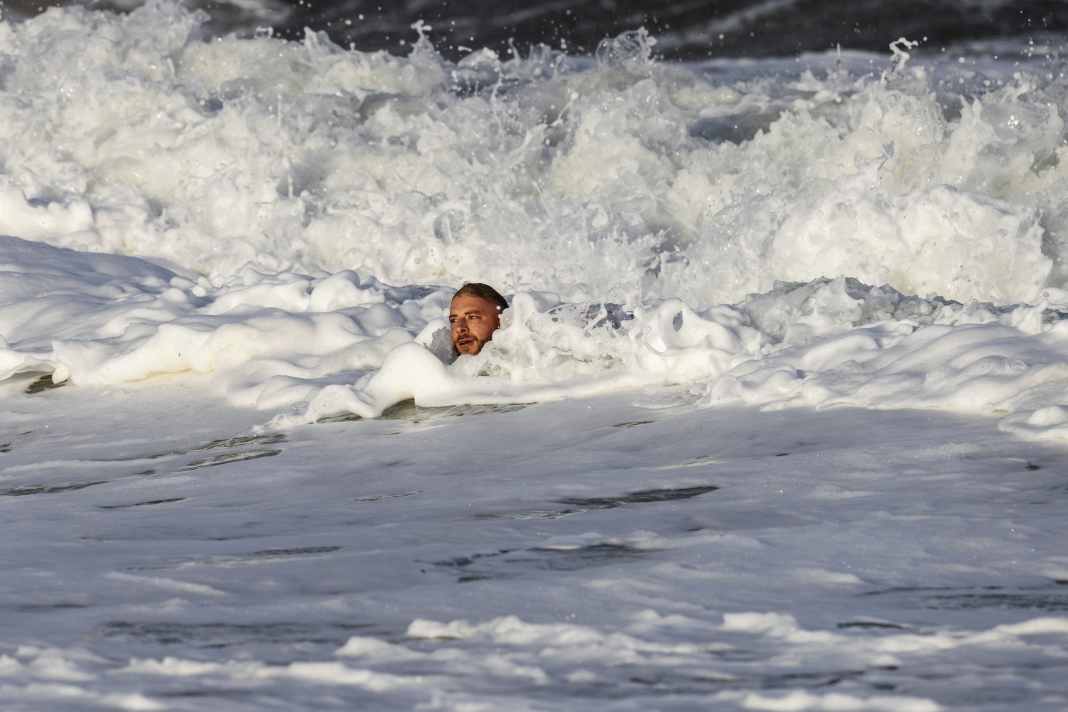PFAS in the North and Baltic Seas: How dangerous is contaminated marine foam for surfers and water sports enthusiasts?
Julian Wiemar
· 27.04.2025






PFAS (perfluorinated and polyfluorinated alkyl substances) are purely man-made substances that have been known for around 80 years and are used in Teflon pans and waterproofing sprays, among other things. They enter the environment, remain there and, when absorbed by the human body, are hardly ever excreted again. Do these chemicals pose a growing threat to us surfers, especially in marine foams? Dr Hans-Jörg Martin, an expert in this field, tells us about the risks of these so-called "eternal chemicals".
The main absorption of PFAS occurs orally. Not a great deal enters the body through the skin."
Seafoam binds PFAS to itself
While the term PFAS in combination with seafoam repeatedly appeared in the media, a study by Greenpeace, in which high PFAS levels were measured on the German North Sea coast, particularly alarmed the water sports scene. Dr Martin confirms: "The measurements are correct. In the foam, the values went up to 160,000 nanograms per litre, while the Danish limit value for bathing water is 40 nanograms." There is no limit value for bathing water in Germany. He explains that PFAS accumulate particularly well in natural sea foam due to their chemical properties. "Put simply, this is like a filter that draws the substances out of the seawater and allows them to adhere well," says the expert.
Even if Greenpeace's measurement is justified, it should be borne in mind that, in principle, we are talking about one litre of water obtained from pure sea foam. It is logical that the concentration of PFAS is then significantly higher than in a "normal" litre of seawater and that the values quickly shoot through the roof. A very large amount of foam is needed to obtain one litre of water. The water for the Danish limit value is taken at a depth of 30 centimetres. Danish PFAS measurements in sea foam also showed very high values in some cases. However, the Danes do not have a limit value for the foam either.
Like milk in coffee
The general contamination of freshwater in rivers and lakes is comparable to seawater, PFAS are everywhere, although there are fewer foam hotspots due to less natural foam formation (by algae and wave action), but unfortunately there are also areas away from the coast that are no less contaminated by industrial waste.
Dr Martin emphasises that there are still many unanswered questions: "We still need to investigate this in the longer term. Is this particularly the case at certain times of year? Is the foam always and everywhere so contaminated?" He also refers to ongoing initiatives at EU level to regulate or ban the production of PFAS. However, he adds: "Of course, the stakeholders are up in arms, so we'll have to see what comes of it." What is certain, however, is that once PFAS chemicals are released into the environment, they can only be recovered with great effort. "A colleague once used the following image: if you pour coffee into milk, you can't get the milk out again in its pure form. And it's the same here: these substances are in nature, but now we're looking at where exactly, because we've only recently realised how dangerous they actually are."
Health risks from PFAS for water sports enthusiasts
The main absorption of PFAS occurs orally, which is why swallowing the foam is particularly problematic. Dr Martin warns: "Not that much gets into the body through the skin, but it shouldn't be swallowed." The chemicals can cause long-term damage to the liver and kidneys, weaken the immune system and impair thyroid function, and some are also suspected of causing cancer. However, the expert emphasises: "This does not mean that they are acutely toxic. They have a chronic effect over a long period of time."
You can't tell the natural sea foam is contaminated with PFAS, you can't taste it, you can't smell it."
Despite the risks, Dr Martin does not advise against surfing: "Water sports are definitely recommended, so you shouldn't give them up." However, he recommends minimising contact with sea foam and not swallowing it under any circumstances. Unfortunately, it is not possible to visually recognise contaminated foam. "You can't see it, you can't taste it, you can't smell it. It's a complex analysis that requires measuring devices the size of refrigerators to be able to detect the chemicals at all," explains the chemist.
Dr Martin advises water sports enthusiasts to check the current situation with local authorities before visiting a spot. Despite the concerns, his message remains positive: you should still go surfing, but with a heightened awareness of the potential risks posed by PFAS hotspots in marine foams.

